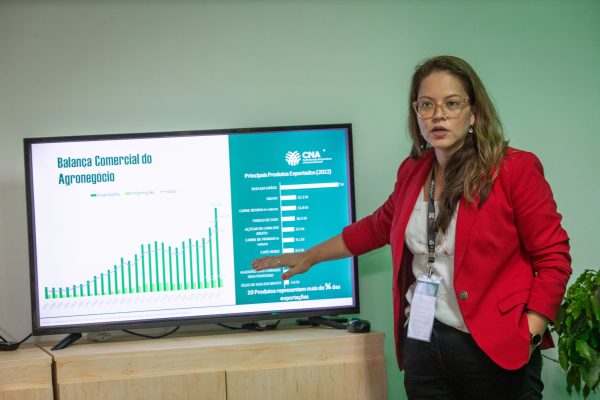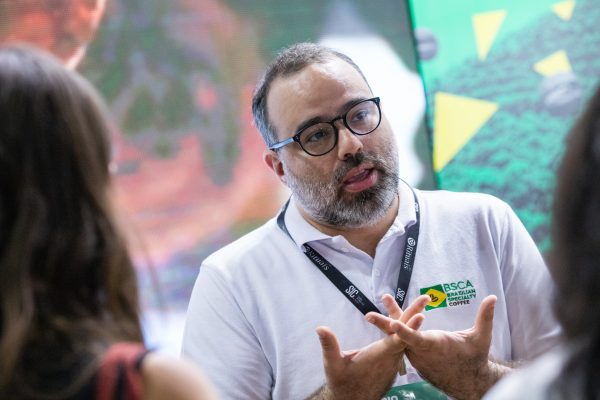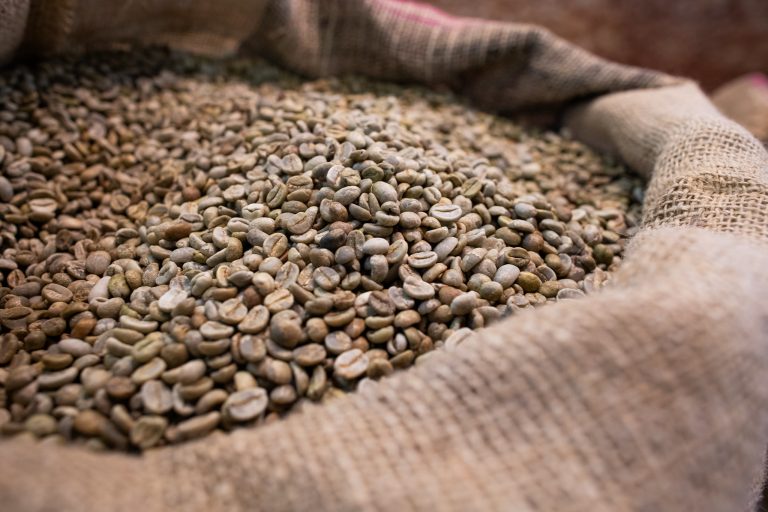São Paulo – Caparaó, Volcanic Region, Alta Mogiana, Chapada Diamantina, Matas de Rondônia. These are some of the Brazilian coffee-producing regions represented at the International Coffee Week (SIC) in Belo Horizonte, the capital city of Minas Gerais state. The show’s motto for the 2023 edition is “Producing origins – a vision of the future for a new coffee chain.”
The event, which ends this Friday (10), is the biggest in the sector in Latin America and one of the most important in the world. This year, it shows the importance of sustainability, traceability, certified origins, and geographical indications (GIs) as synonymous with quality for Brazilian coffee.

The GI certificate is granted to products typical of their place of origin, adding value and reputation and giving a competitive differential to the products in the market. These products have unique qualities due to their terroirs, given by local natural resources such as soil, vegetation, climate, and know-how.
Brazil has 15 coffee GIs and another 20 coffee-producing regions.
Coffee farming in Minas Gerais has the highest number of GIs recognized by the Brazilian National Institute of Industrial Property (INPI) – Campo das Vertentes, Caparaó (shared with Espírito Santo), Matas de Minas, Cerrado Mineiro, Mantiqueira de Minas, and Southwest Minas. Other producing macro-regions in the state are South Minas, Chapada de Minas, and Montanhas de Minas.
In a press conference at SIC on Thursday morning (9), the president of the Federation of Agriculture and Livestock of the State of Minas Gerais (FAEMG), Antonio de Salvo, stated one of the biggest challenges in the sector is succession.
The agronomist has been ahead of the federation for two years and is the fourth generation of a family of farmers. He said Brazil is the country that preserves the environment the most and has been optimizing agricultural production without increasing the used land area.

Sueme Mori, director of International Relations of the Brazilian Confederation of Agriculture and Livestock (CNA), reported Brazil is the third-largest food exporter in the world, and green coffee is the seventh best-selling item in the agricultural export basket.
The director said rural producers are most interested in improving themselves to preserve the environment and mitigate climate change. “Our coffee farming is carbon negative – coffee production in Brazil captures carbon,” she said.
Training small producers also helps production become increasingly sustainable, using bio-inputs and clean energy sources, such as solar panels, among other actions. The Brazilian National Rural Learning Service (SENAR) conducts vital work to train agriculture professionals and encourages young succession to become aware of the importance of good practices.
Raquel Miranda, technical advisor of CNA’s coffee department and coffee producer in South Minas Gerais, reported that Brazil produces large amounts of both Arabica and Robusta coffees. She said local production increasingly values diversity in leadership positions, and the quality of a coffee is not just in its grading and sensory attributes but also in the good practices and sustainability of production.

“Brazil is a major producer, exporter, and consumer of coffee. We are the third-largest coffee consumer in the world, and the quality of our coffees has been increasing year after year, with characteristics outside the bean that go beyond the sensory attributes. Demand has grown for us to prove and demonstrate the appreciation of diversity and human rights in the sector, and Brazil has all the attributes to confirm the traceability of its products,” said the advisor.
In addition to the GIs, cooperative work in some producing regions also helps with product traceability, said Miranda.
China and Saudi Arabia were the two markets that recorded the highest growth in the domestic availability of coffee, Mori reported based on data that shows the growth in coffee availability in different markets, considering production, trade, and stock.
“It is a strong indication of the expansion of consumption in these countries. Eastern markets have reported large increases in recent years, showing the increased acceptance of coffee on the palate of these consumers,” she said.
Specialty coffees
Vinicius Estrela, executive director of the Brazil Specialty Coffee Association (BSCA), informed at SIC that Brazil produces around 8 million bags of specialty coffee a year from over 35 regions and more than 150 varieties.

“This guarantees an outstanding diversity of sensory profiles and puts Brazil on the global stage of specialty coffees,” said Estrela.
According to the director, new generations of Brazilian specialty coffees are being produced with new varieties, ensuring, in addition to the traditional profile of Brazilian specialty coffee, mostly chocolatey, also floral and fermented coffees, with higher acidity, among other qualities.
The association aims to increase the competitive edge of Brazilian coffee and continue presenting new sensory profiles to make all-Brazilian blends viable.
Regarding the Arab countries, Estrela said the leading buyers of Brazilian specialty coffees are Saudi Arabia and the United Arab Emirates and that BSCA has been participating since last year in World of Coffee Dubai, a sector show in the emirate, which takes place in late January and it will also participate next year.
In addition to products and services in the coffee chain, SIC covers items such as cheese, dulce de leche, cachaça, olive oil, honey, and yerba mate.
The show is held by FAEMG, SENAR, the Brazilian Service of Support to Micro and Small Companies (SEBRAE), Minas Gerais state government, and Espresso&Co. The CNA/SENAR group conducts a series of activities during the event. The ANBA reporter participated in the event at the invitation of CNA.
Translated by Elúsio Brasileiro




